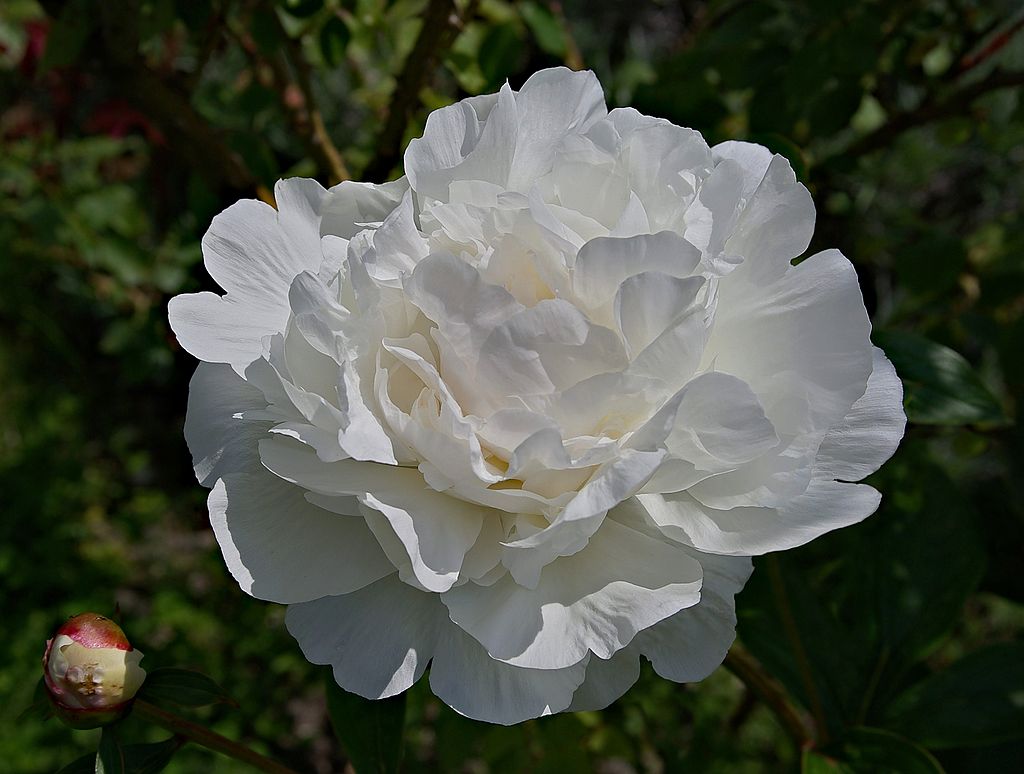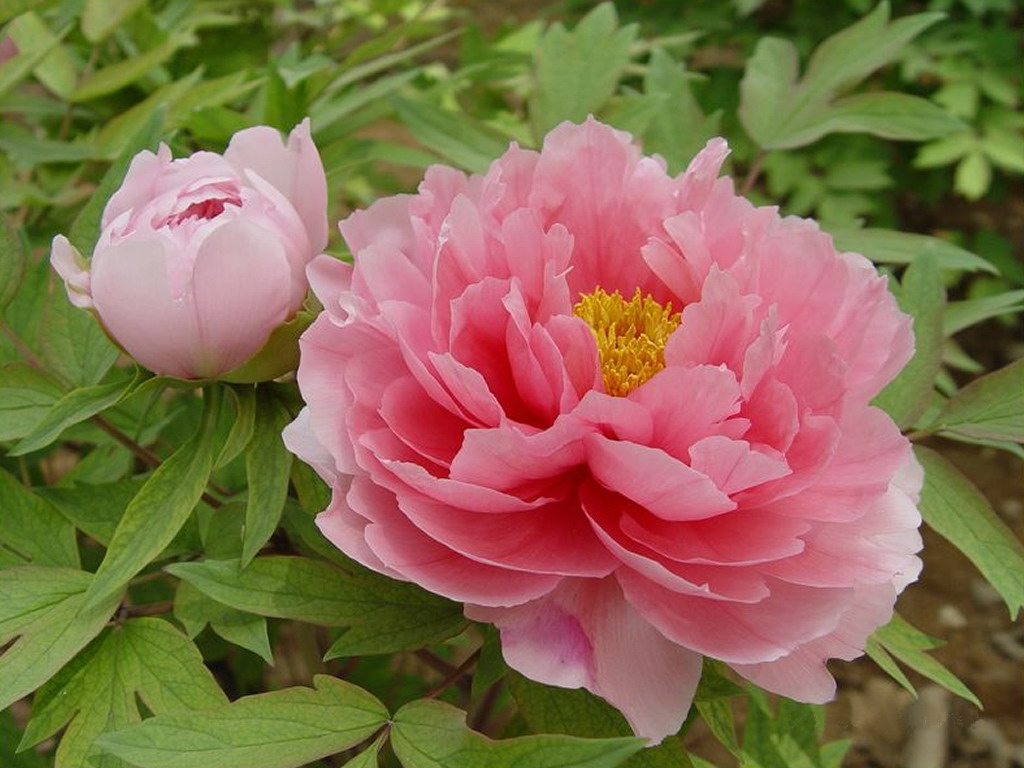We have entered the micro-season of “The Tree Peony Flowers”, which is the third micro-season of the mini-season of Grain Rain.
Each mini-season contains three micro-seasons. The micro-seasons contained within Grain Rain are:
- The First Reeds Grow (April 20 – April 24)
- The Frost Stops the Rice Grows (April 25 – April 29)
- The Tree Peony Flowers (April 30 – May 04)
These seasons were established in 1685 by Japanese astronomer Shibuka Shunkai and are specific to Japan. However, just because the calendar focuses on Japan doesn’t mean it isn’t applicable to others. No matter where you live you can use these seasons as a starting point for your personal exploration of the world around you.
The Tree Peony
The Tree Peony is a deciduous woody shrub with large flowers. The term “Tree Peony” can refer to any of the shrub-like species that make up the Moutan section of the Paeonia genus in the Paeoniaceae family.(1) A majority of the wild versions of the Moutan section have become extinct or endangered.(2) However, there are several cultivated versions of this plant that are doing well. One such plant is identified as Paeonia suffruticosa or the “King of Flowers”.(2)
The Paeonia suffruticosa is said to be much sturdier than their herbaceous peony cousins. Because it is a tree, it has the ability to survive the winter and has a longer life span. The flowers on the Paeonia suffruitcose flowers are also known for their early and long-lasting flower blooms.(3)
China’s National Flower
In 2019, after many years without a national flower, China conducted a nationwide poll to determine its floral symbol. The “King of Flowers” won this vote with 79 percent of the 362,264 votes cast. The other contenders in the context were the wintersweet with 12 percent and then the orchid with 2 percent. The chrysanthemum, camellia, lotus, sweet-scented osmanthus, Chinese rose, azalea, and narcissus were all on the ballot but received less than 1 percent of the vote. (4)
Medicinal Uses
The bark from the roots of Paeonia suffruticosa is known as Mu Dan Pi (MDP) or Moutan Cortex Radicis. The bark has been used in traditional Chinese Medicine for thousands of years primarily as a treatment for autoimmune disorders. Research has shown that the bark’s “bioactive components exhibit anticancer, antimicrobial and antioxidant properties and are widely used for the treatment of diabetes, cancer, cardiovascular and neurological disorders”. Some of its benefits include reducing fever, “cooling the blood, improving liver function, and mildly invigorating the blood.”(3) Mu Dan Pi is said to be at its best when it is thick, starchy, and fragrant.(5)

Poems about the Peony
The peony is a popular and revered flower in China and Japan. It holds cultural significance as it symbolizes “honor, riches, and aristocracy as well as love, affection, and feminine beauty.”(5) It also is a seasonal word that represents spring.
Below are a few poems about the peony from ancient China during the Sui (581-618) and Tang (618-906) dynasties. Along with some haiku from the early haiku masters Yosa Buson, Kobayashi Issa, and Matsuo Basho.
Poems from Qian Qi and Emperor Yang
“Spring River Flowers Moon Night” by Qian Qi (710-782)
The river is smooth and calm this evening, The peony flowers bloom. The moon floats on the current. The tide carries the stars.
“Peonies at Jixing Temple” by Emperor Yang (569-618)
Springtime radiance, gradually, gradually where does it go? Again before a wine jar, we take up a goblet. All day we’ve questioned the flowers, but the flowers do not speak. For whom do they shed their petals and leaves, for whom do they bloom?

Haiku from Buson, Issa, and Basho
About to bloom, And exhale a rainbow, The peony! -Buson
In the stillness, Between the arrival of guests, The peonies. -Buson
Dear, dear, What a fat, happy face it has, This peony! -Issa
a bee staggers out of the peony -Basho
This finally haiku by Basho is my favorite out of this collection. The thought of a bee staggering out of a flower drunk on sweet nectar is just wonderful. What a celebration of spring!
Resources:
- “Tree Peony”; Wikipedia
- Zhou, Shi-Liang et al. “Multiple species of wild tree peonies gave rise to the ‘king of flowers’, Paeonia suffruticosa Andrews.” Proceedings. Biological sciences vol. 281,1797 (2014): 20141687. doi:10.1098/rspb.2014.1687
- “Paeonia × suffruticosa“; Wikipedia
- Yang Wanli; “China selects peony as national flower”: China Daily
- “Mu Dan Pi”; Jade Institute: Waybackback Machine Internet Archive
- Peony poems were all found on The Cricket Hill Garden website. Cricket Hill Garden is a family-owned plant nursery in Connecticut that sells many varieties of peony.
Want to support our work? Visit the Naturalist Weekly bookstore and browse our curated lists of books of poetry and haiku. Or pick up a gift card that can be used throughout the store.

I loved that!
Hi Adele, thank you and I am glad you enjoyed this one. I hope all is well and you are having some good spring weather.
All is well, thanks, but a little chilly here still. Hopefully all is well with you and your family and you are doing better weather wise.
We are getting there! Frost on the windows this morning but it should be a good day.
Wonderful post! My favourite flower, the peony.
Thank you! I am glad you enjoyed this one. The cultural significance of these flowers is pretty amazing.
Thanks for the comment and I hope all is well!
So beautiful fresh flowers to view and inspiring lines also 🌷🙏😍thank you for sharing 👍🏻😊happy weekend 👏
Hi Thattamma, thank you and have a great weekend!
Thank you so much 😊 and May Day and here Happy Raya
holidays 1 week, so children 2 years never travel all happily
travelling now 👍🏻🌷🙏😍
One thing I found interesting here was that China didn’t have a national flower for some time, and that out of a nation of 1.4 billion people, only 362,264 votes were cast for the selection of the national flower. The poems included are brilliant, and I had to grin at Issa’s ever-present sense of humor in his haiku. I also agree with you that Basho’s stumbling bee is a wonderful mental image. Your articles always educate and inspire, Mark, and the poetry you include in each one makes them a joy to read. 🙂
Hi Mike, Thanks for this comment. I am glad that you appreciated the post. Also, thanks for highlighting the gap between votes cast and people in the country. I didn’t even think of that! I hope all is well! Talk soon.
Final haiku is the best.
Art
Hi Art, I totally agree with you. Basho’s haiku is fantastic. Thanks for the comment! I hope all is well.
Extra-wonderful poetry!
Hi Ana, I am glad that you enjoyed this one! I so appreciate the way a poem can capture a moment.
Indeed, yes.
This is such a lovely post and all the poems are beautiful! 😊
Hi Aaysid. Thank you for the comment and I am glad you enjoyed the post!
Thanks for another great post. Loved the poems.
Hi Goff, Thanks for the comment! I am glad that you enjoyed this one.
Pleasure. Mark. Great Post. Great Read. Happy Thursday My Friend
They are my favorite Mark and lovely job on your poems and so much great info! 💖💖
Hi Cindy, Thank you so much for the comment! I am glad that you enjoyed this one and the poems.
You’re so welcome Mark! I really did! 💖
I love the peony flowers. I finally have one growing for the first time this year. The haiku are really wonderful.
Hi Dwight, that is really awesome that you have peonies at your house! I’m pretty sure it is cold up here. Although, I have never looked. Happy birthday too!
Thanks for the comment.
We had them when I was growing up in Pennsylvania. My mom loved them!